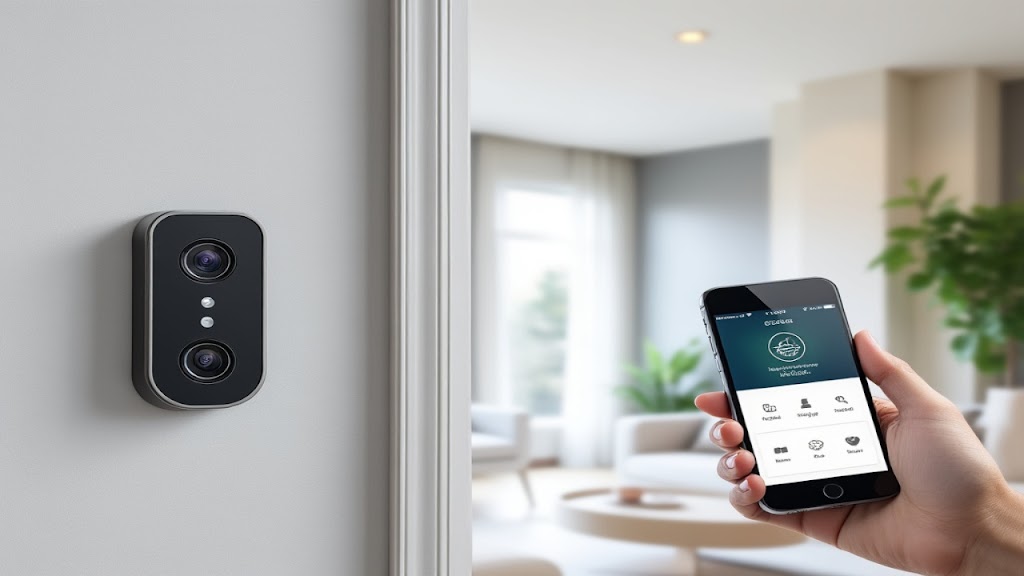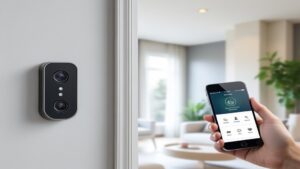In today’s world, home security is more crucial than ever. As crime rates fluctuate and technology advances, enhancing your home’s security with modern alarms and surveillance systems can provide peace of mind and protect your property. This guide will walk you through the essentials of implementing these security features, ensuring you make informed decisions to keep your home safe.
Discover how to enhance your home security with effective alarms and surveillance systems. This guide covers everything from choosing the right devices to integrating and maintaining your security setup.
Understanding Home Security Needs
Assessing Your Home’s Vulnerabilities
Before diving into the specifics of alarms and surveillance systems, it’s essential to assess your home’s vulnerabilities. Identify potential entry points such as doors and windows that could be targeted by intruders. Evaluate areas that may be less visible from the street or lacking in natural surveillance.
- Common Security Risks: Unsecured doors, poorly lit areas, and accessible windows are frequent entry points for burglars.
- Property Evaluation: Walk around your property to identify weak spots that need attention.
Setting Security Goals
Determine what you want to achieve with your security system. Are you looking to prevent break-ins, monitor your home while you’re away, or receive alerts for emergencies? Establish clear objectives to guide your selection of security features.
- Defining Objectives: Decide if your primary goal is theft prevention, fire safety, or both.
- Budget Considerations: Balance your security needs with your budget to find the best solution.
Choosing the Right Security Alarms
Types of Security Alarms
Different types of alarms serve various purposes in enhancing home security. Here’s a breakdown of the most common types:
1. Burglar Alarms
Burglar alarms are designed to detect unauthorized entry and alert homeowners or authorities. They come in various forms, including motion detectors and door/window sensors.
- Pros: Provides immediate alerts, acts as a deterrent for intruders.
- Cons: Potential for false alarms, requires regular maintenance.
2. Fire Alarms
Fire alarms are crucial for detecting smoke or fire. Integrating these with your security system can provide comprehensive protection.
- Pros: Early detection of fire hazards, helps prevent damage and loss.
- Cons: Needs regular testing and maintenance to ensure functionality.
3. Carbon Monoxide Alarms
Carbon monoxide alarms detect the presence of this harmful gas, which is colorless and odorless, making it a silent threat.
- Pros: Prevents carbon monoxide poisoning, essential for homes with gas appliances.
- Cons: Requires regular battery checks and replacement.
Features to Look for in Security Alarms
When selecting security alarms, consider the following features to ensure they meet your needs:
- Ease of Installation: Choose between DIY or professional installation based on your comfort level and system complexity.
- Connectivity: Decide between wireless and wired systems based on reliability and installation ease.
- Integration: Ensure compatibility with other smart home devices for a unified system.
Implementing Surveillance Systems
Types of Surveillance Cameras
Surveillance cameras are vital for monitoring and recording activities around your home. Here are the main types:
1. Indoor Cameras
Indoor cameras monitor activity within your home, providing real-time footage and recording capabilities.
- Pros: Monitors interior activities, helps with issues like package theft.
- Cons: Limited to indoor coverage, may raise privacy concerns.
2. Outdoor Cameras
Outdoor cameras are designed for monitoring the exterior of your home. They help deter criminals and provide evidence if needed.
- Pros: Covers a wide area, acts as a deterrent for burglars.
- Cons: Needs weatherproofing, can be more noticeable.
3. Doorbell Cameras
Doorbell cameras integrate with your doorbell system to capture video of visitors at your front door.
- Pros: Provides a view of who is at the door, can be integrated with smart home systems.
- Cons: Limited field of view, may have privacy implications.
Key Features of Surveillance Systems
When selecting surveillance systems, ensure they have these critical features:
- Resolution and Clarity: Opt for high-definition cameras for clear images and videos.
- Night Vision: Choose cameras with night vision capabilities to ensure visibility in low-light conditions.
- Motion Detection: Look for cameras that offer motion detection to receive alerts only when activity occurs.
Integrating Alarms and Surveillance Systems
Creating a Unified Security System
Integrating alarms and surveillance systems into a single, cohesive security network enhances your home’s protection. A unified system allows for streamlined management and comprehensive monitoring.
- Benefits: Easier to manage, provides a complete security overview.
- Challenges: Higher initial setup cost and potential technical issues.
Choosing a Centralized Control System
A centralized control system lets you manage all security devices from a single interface, such as a smart hub or mobile app.
- Pros: Simplifies control, offers remote access.
- Cons: Dependence on technology, potential for tech-related issues.
Ensuring System Compatibility
Verify that your alarms and surveillance equipment are compatible to ensure seamless operation. Incompatible devices may lead to system malfunctions or reduced effectiveness.
- Pros: Seamless operation, easier troubleshooting.
- Cons: May require additional adapters or upgrades.
Professional Installation vs. DIY Setup
Advantages of Professional Installation
Professional installation offers expertise and ensures that your security system is set up correctly.
- Pros: Reliable setup, often includes maintenance and support.
- Cons: Higher cost compared to DIY.
Benefits of DIY Installation
DIY installation can be cost-effective and allows for a customizable setup, but it requires technical know-how.
- Pros: Lower initial cost, control over setup.
- Cons: Requires technical skills, risk of errors.
Maintenance and Upgrades
Regular Maintenance Tips
Routine maintenance is essential to keep your security system functioning properly. Regularly test alarms, check batteries, and ensure cameras are clean and operational.
- Routine Checks: Test alarms and cameras to ensure they are working correctly.
- Battery Replacement: Regularly replace batteries in alarms and sensors.
Upgrading Your Security System
As technology advances, consider upgrading your security system to incorporate the latest features and improvements.
- Pros: Enhanced technology, improved security features.
- Cons: Additional costs and potential system downtime during upgrades.
Legal and Privacy Considerations
Understanding Local Regulations
Be aware of local regulations regarding the installation and use of security systems, especially for surveillance cameras.
- Pros: Ensures compliance with laws, avoids legal issues.
- Cons: Requires research and understanding of local regulations.
Respecting Privacy
Balance the need for security with privacy concerns, particularly when installing cameras that might capture footage of neighbors or public areas.
- Pros: Protects privacy, complies with legal standards.
- Cons: Limits the scope of surveillance and monitoring.
Conclusion
Implementing alarms and surveillance systems is a crucial step in enhancing your home security. By assessing your needs, choosing the right devices, and ensuring proper integration, you can create a secure environment that provides peace of mind. Regular maintenance and thoughtful upgrades will keep your system effective and reliable.
By following this comprehensive guide, you’ll be equipped to make informed decisions about your home’s security, ensuring a safe and protected environment for you and your family.

